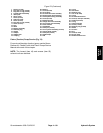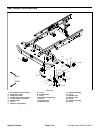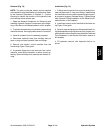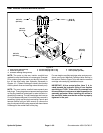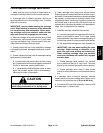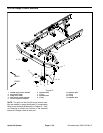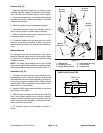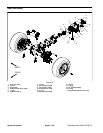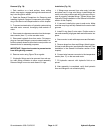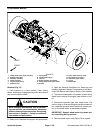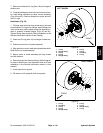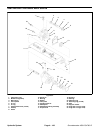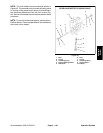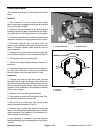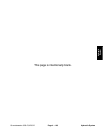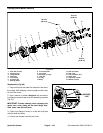
Groundsmaster 4500--D/4700--D Hydraulic SystemPage 4 -- 97
Removal (Fig. 78)
1. Park machine on a level surface, lower cutting
decks, stop engine, engage parking brake and remove
key from the ignition switch.
2. Read the General Precautions for Removing and
Installing Hydraulic System Components at the begin-
ning of the Service and Repairs section of this chapter.
3. To prevent contamination of hydraulic system during
rear axle motor removal, thoroughly clean exterior of
motor.
4. Disconnect wire harness connector from the temper-
ature sender (item 17) on the rear axle motor.
5. Disconnect hydraulic lines from motor. Put caps or
plugs on lines and fittings to prevent contamination. La-
bel the hydraulic hoses to show their correct position on
the axle motor for assembly purposes.
IMPORTANT: Support axle motor to prevent motor
from falling during removal.
6. Remove motor using Figure 78 as a guide.
7. If hydraulic fittings are to be removed from axle mo-
tor, mark fitting orientation to allow correct assembly.
Remove fittings from motor and discard O--rings.
Installation (Fig. 78)
1. If fittings were removed from axle motor, lubricate
and place new O--rings onto fittings. Install fittings into
motor ports using marks made during the removal pro-
cess to properly orientate fittings. Tighten fittings (see
Hydraulic Fitting Installation in the General Information
section of this chapter).
2. If removed, install pinion gear to axle motor. Make
sure that snap rings are fully seated into the motor shaft
grooves.
3. Install O--ring (item 2) onto motor. Position m otor to
rear axle assembly, align gear teeth and slide motor into
place.
4. Secure motor to axle with cap screws and flat wash-
ers.
5. Remove plugs from lines and fittings. Attach hydrau-
lic lines torear axle motor (see Hydraulic Hoseand Tube
Installation in the General Information section of this
chapter).
6. Connect wire harness connector to the temperature
sender (item 17) on the rear axle motor.
7. Fill hydraulic reservoir with hydraulic fluid as re-
quired.
8. After assembly is completed, verify that hydraulic
lines and fittings do not contact anything.
Hydraulic
System



